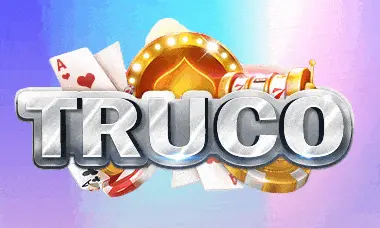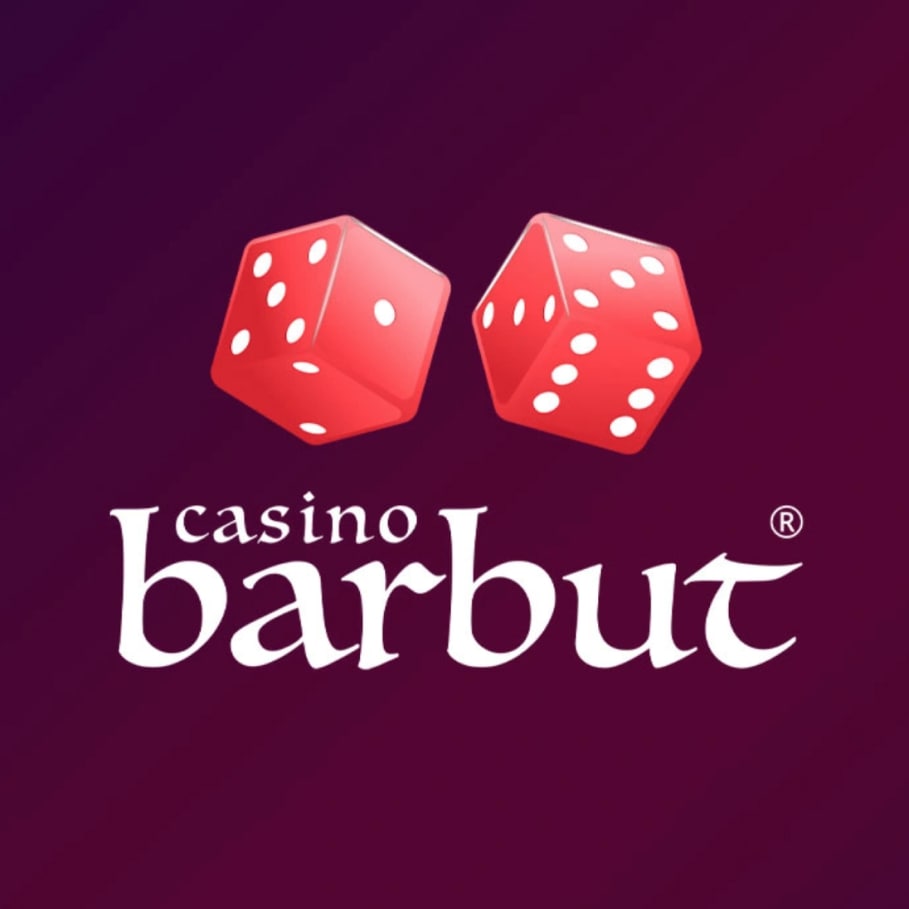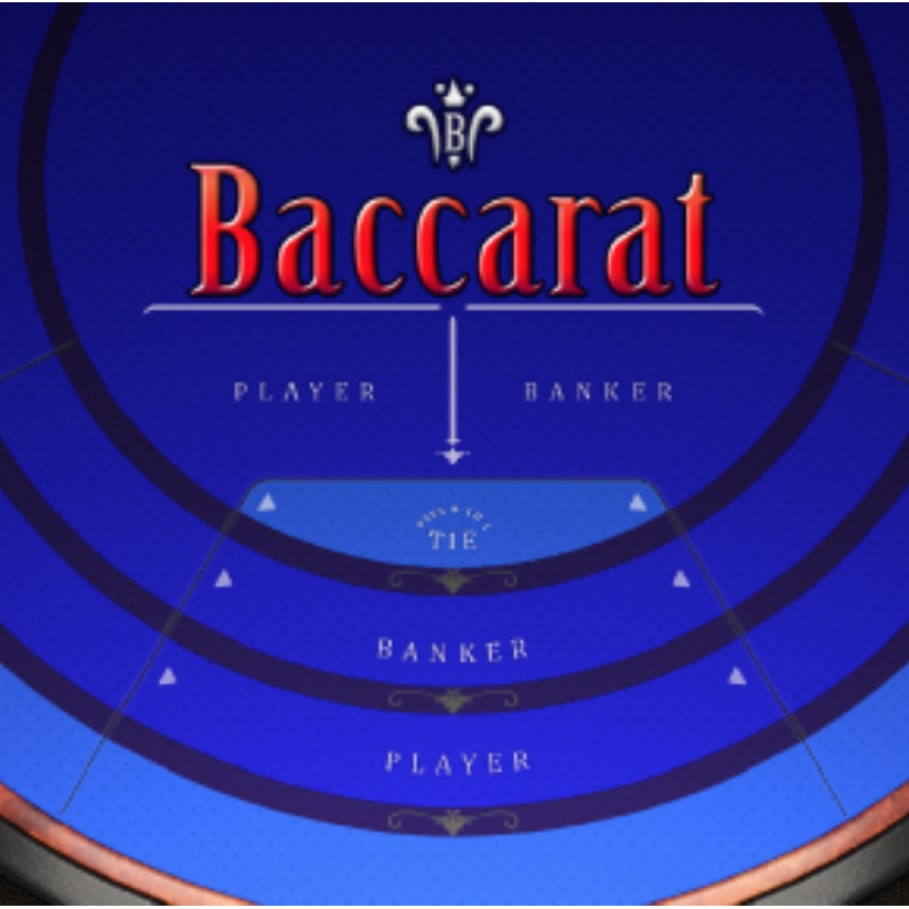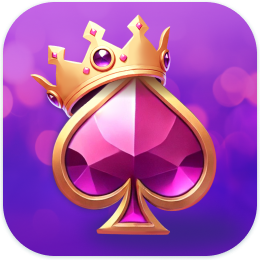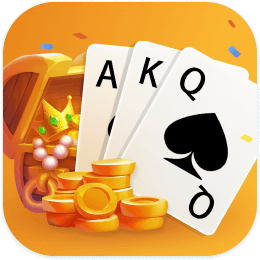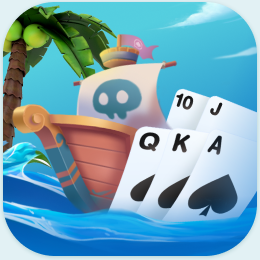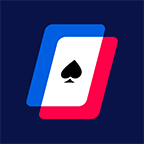The Definitive Guide to Poker Tournament Strategy - Conscious Poker Official Website

This is the absolute definitive guide to tournament strategy, complete with push fold charts and how to maximize your edge in every stage of the tournament. This is the absolute definitive guide to tournament strategy, complete with push fold charts and how to maximize your edge in every stage of the tournament. 
Success in tournament poker is measured in lifetime earnings, which is the total amount of cumulative prize money a player has won. This number is deceptive because it doesn’t account for the buy-ins, nor does it take into account whether players are even profitable.
For example, players can boast they have a lifetime earnings of $1,000,000; however, they may have played 200 tournaments, each with a $10,000 buy-in (totaling $2,000,000), and, therefore, are losing poker players.
Conversely, a player with just $100,000 in lifetime earnings from playing 200 tournaments, with $100 buy-ins (totaling $20,000), is considered to be an extremely profitable player.
Unfortunately, the majority of the time, only the former gets notoriety; consequently, most of the “big names” in the tournament poker scene are those who play the high rollers (the events with the highest buy-ins), because their earnings are higher.
For example, while I can personally boast that I have over $1,500,000 in tournament earnings, the truth is that not all of that is profit. I’ve probably accumulated, thus far, $300,000 in tournament buy-ins; as a result, my total earnings are only $1,200,000. While there are many players with high tournament earnings, what really matters is the ROI, or return on investment. Unfortunately, this metric is too often neglected when speaking about tournament results.
Fortunately, there are other, more accurate, ways to measure success in tournament poker, using a player’s aggregate of final tables and titles won.
While final tables and titles can also be deceptive (immensely benefitting those who play high rollers, whose average field size is 50 instead of 500 or 5,000), it’s a much better metric to measure success in tournament poker.
We believe that a system that rewards ROI would be the best metric for measuring success in tournaments, because it focuses on profitability. In other words, ROI would be cashes minus buy-ins; currently, there isn’t a system which measure results in this way.
The Global Poker Index, the world’s leading authority on ranking tournament players, does a pretty good job of indexing tournament results, and takes into account field size, prize pool, and other metrics, to paint a more accurate picture.
Tournament poker has an incredible amount of variance. As a general rule, one should think of tournaments like a lottery with small edges: you may know two of the numbers, but you are still playing the lottery.
In practical terms, that means you can go your entire tournament career without winning a major event, even if you are one of the best players in the world.
While I go into much more detail about the variance in tournament poker in my video, below, here’s one practical thought experiment.
If you’re playing an average World Series of Poker or World Poker Tour event, with 500 players, the probability that any one person will win is 1/500 or 0.02%. Even if you consider yourself the best player in the world, your chances of winning are certainly no more than 5x the average player or 1%.
Not only can a player easily go 100 events without winning—because of the laws of mathematics and standard deviation—she could play 1,000 tournaments and never cash a 1st place victory.
In practical terms, if you play a tournament once a week, you can go 20 years without winning a single one.
For this reason, many top winning poker players supplement tournaments with cash games, a form of poker with much lower variance and arguably more skill-edge, because of the deeper stack-to-pot-ratio, thereby, allowing players to make more multiple street decisions.
If you’d like a complete overview of profitability in tournament poker, the variances you can expect, and practical tips for how to manage your bankroll, based on the data above, please check out the video below.
Most players consider the only rake in tournament poker to be the fee associated with the buy-in. For example, in a $10,000 buy-in, the rake is usually $300. Other times, the rake is taken directly out of the prize pool, usually in the form of a percentage.
While the fee for a tournament entry will vary from tournament-to-tournament, you can expect the rake to be somewhere around 3%, a reasonable amount given the costs involved to run the event.
However, it’s important to note that there are many forms of additional “rake” in tournament poker, which often goes unaccounted for by players. The most notable form of hidden rake is the cost for players to actually play an event: in the form of travel expenses, gratuities to dealers and staff, occasional hotel expenses, and opportunity costs.
Before we proceed, I would like to tell you about our upcoming mastermind, Alec’s Academy.
If you are an intermediate or advanced poker player looking to refine your skillsets signing up for Alec’s Academy is the best and easiest way to do it.
Let’s take a look at two examples: one, where our hero plays tournaments in his home city, and the other, where he must travel to the event.
Example 1: Playing From Home Hero decides to play a $1,000 buy-in tournament, at the Commerce Casino, nearby his home in Los Angeles. He pays a standard rake of $70 and thinks nothing of it.
While he is unsure of whether or not he will win or bust early, Hero expects to play an average of 14 hours in this event.
Because he is one of the best players, he expects his ROI to be 50%; in other words, he will make 50% of his buy-in (entry fee minus rake).
Hero’s ROI: ($1000-$70) x 50% = $465
Hero’s Hourly: $465/14 = $33.20
I’d argue that someone with Hero’s skillset has a higher opportunity playing cash games while risking less money. Let’s take a look at how much he’d stand to earn if he were to take that same $1,000 and apply it to a $5/$10 No Limit Hold’em cash game.
Remember that Hero is one of the best players and can expect to win at 15bb/100 hands.
At $5/$10 that means he’ll win $150 every 100 hands. At a conservative 27 hands per hour, he will win $40.50 in cash games, including rake. Not only will Hero win, roughly, 20% more per hour playing cash games, he will do so with a lot less variance.
Example #2: Hero Travels to Play a Tournament Note: While this example would apply to Hero if he were to travel for cash games, as well, I included it in the tournament section because it is far more common for players to travel for tournaments.
Hero flies to Vegas for the weekend to play a series of three tournaments, each with a $1,000 buy-in.
His ROI is as follows: $465 x 3 = $1,395
His expenses to travel include flights and hotels, which are conservatively $1,000. Therefore, his new ROI is $395, and new hourly is 395/36, or $10.98. If he were to travel for cash games, his ROI would shrink proportionally as well.
It’s important to think about all the costs of playing poker, before making a decision about what or where to play. I call this the true rake. Keeping the true rake in mind will help you make more profitable and higher EV decisions at the poker table.
One final thought: true rake doesn’t account for intrinsic value or personal goals. If you’re goal is to final table a WSOP event, then it’s important that goal is taken into consideration, as well. There’s more to your poker journey than ROI and EV.
For more practical implementations on how rake affects your poker game, and the exact system I use to optimize my bankroll for risk/reward, while maximizing my hourly, please check out my course, Four Step Poker Mastery.
You can also subscribe to my email list to be alerted for when enrollment opens.
In tournament poker, it’s important to understand, fundamentally, that each chip is not worth the face value that it represents. The easiest way to conceptualize this is to think about what happens if you win. You may win all the chips in play, but you only receive roughly 20% of the total price pool. This phenomenon gives us insight into how we should be approaching tournaments to formulate our strategy.
The most important principle to understand in tournament poker is the idea that each chip is worth less than the previous one. In the real world, this is referred to as diminishing marginal return (DMR).
What does this mean for your game plan?
Well it means that when you’re a big stack (with 120 big blinds, while the field’s average stack is 50 big blinds) you should be extremely aggressive, since the additional blinds don’t increase the real-dollar-value of your stack, as much as the original ones.
In other words, you should be looking for good spots to apply pressure with 30-50 of your big blinds, attempting to gain more.
When you’re a middle stack, you should aim to pick on smaller stacks, who you can threaten to bust if they get involved with you. You should, simultaneously, stay away from larger stacks that can threaten your tournament life.
As a short stack, you are at risk of being knocked out by nearly everyone at your table; consequently, you should look for good spots to go all-in, ideally when you have some fold equity. A classic example is what’s called, restealing: shoving over a loose opener.
For example, if a medium stack opens for 2.5BB, from late position, you can resteal from the small blind, with 18BB and a hand that will have decent equity when called, adjusting your stealing range depending on the tendencies of the opener.
The looser he opens, and the tighter he calls your shove, the more you can justify stealing wide. Conversely, the tighter he opens, and the looser he calls, the more conservative you’ll have to be when considering a shove.
The last component to having strong tournament fundamentals is preflop play. Because preflop is the first decision you make at the poker table and sets the tone for the rest of the hand, it’s often the most important.
Perhaps nowhere is this truer than in tournament poker, where the stack-to-pot-ratio is smaller (meaning you are less “deep-stacked”), often forcing you, more frequently, to be all-in preflop.
If you haven’t already done so, please download my “Preflop Charts” and the “Quick Start Guide to Preflop Play.”
The preflop charts apply, primarily, to situations where you’re 50 big blinds deep, or greater, with no antes; or 40 big blinds deep, with antes.
The Quick Start Guide will improve your fundamentals, and give you tools to adjust the information you learn to your precise situation against your particular opponent.
Download it below.
100% privacy, 0% spam
In the next section we’ll take a closer look at optimal times to exploit your opponents, and take a deeper dive into how to play the various stack sizes.
Most people consider short stack play to be 11 big blinds or less. In this format of poker, the game is solved.
By memorizing shoving ranges from the various positions, you can play perfectly. The best way to accomplish this is to download the push-fold charts that tell you which hands to shove from which position.
Push-fold charts are convenient to use, because they tell you how to play both, with and without antes, and how to adjust your shoving ranges, depending on how many opponents are left.
Barring extreme situations, I agree with the push-fold theory that players should never do anything other than push all-in or fold, when they’re below 10 big blinds. Therefore, simply committing to memory the information in the guides will suffice for how to play perfect game theory optimal poker (GTO) from this stack depth.
To download your push-fold charts, simply enter your name and email in the field below and we’ll send them right over.
100% privacy, 0% spam
One adjustment that’s worth making that push-fold charts don’t account for is your table and the softness of the field. I would argue that the softer the field, the tighter you can play, because you’re more likely to find better spots, later on; whereas, the tighter the table (the less likely players will call your all-in, preflop), the wider you can profitably shove.
Ideal situations to widen your range are when players are scared of the money, playing overly tight, don’t adhere to proper GTO calling ranges, or give you a lot of respect.
Ideal situations to play tighter are when you are closer to the money, when facing a big stack, or when there are a lot of loose players at the table who call too lightly.
In conclusion, passing on a situation that has minimal positive expectation is usually better than being too aggressive and playing a situation with negative expectation. When in doubt, wait for a better spot.
Small Stack Tournament Play
Small stacks, ranging from 12 – 20 big blinds are often the most difficult to play. You are generally too deep to justify shoving all-in preflop, yet raise-folding is punitively expensive.
Each hand you play at this stage is crucial so it’s important to understand how to play them effectively. It’s important to note that there is no one-size-fits-all and playing stacks of this nature is an art. You should aim to adjust the following variables, depending on your opponents, the field, the payout structure, and many additional factors.
While I discuss these concepts in more detail in Four Step Poker Mastery, the basics of what you need to know are the following:
1. Look for spots to resteal over loose openers.
Example: A loose player opens in the cutoff for 2.5 big blinds. He’s been playing too many hands and is taking advantage of the tight, weak player (TAG) in the big blind. It’s likely that his range is much wider than it should be.
You look down at KTs on the button. While this hand is far from premium, when you combine your fold equity (the probability that he will fold), plus your solid equity when called, this becomes a clear spot to shove.
I share my exact process for how to decide which hands to shove in Four Step Poker Mastery, breaking down complex math programs, like Poker Cruncher, into simple to understand versions; for now, it’s important to understand which spots you’re shoving wide and which spots you’re shoving narrow.
Shove wide when you’re against loose openers, who have medium stack sizes and open in late position; most assuredly, they have wider ranges and will be crippled if they call your all-in and lose.
Shove narrower against tight openers who are either very short (therefore, unlikely to be opening without a premium hand), or big stacks who are indifferent to losing an all-in against someone with your stack size. Also, shove narrower when you are closer to the money, or when ICM dictates that the risks are too high (more on this in the next section).
2. Open much tighter and avoid big stacks.
You should aim to exploit tight opponents by min-raising (to 2 big blinds) from late position, in an attempt to steal the blinds.
When called (usually from the big blind), bet 2.5 big blinds postflop (or 1/3 of the pot), as a continuation bet for a second attempt to steal the pot.
When called on the flop, shove All-in on the turn (if your stack-to-pot-ratio is close to one), whenever you have a decent amount of equity. You can widen your shoving range, if your opponent is very likely to fold or you get a strong read.
Otherwise, if you believe your opponent will call, or you have absolutely nothing, simply check behind and give up the pot.
It’s important to acknowledge that this play is one that you will setup preflop; therefore, it’s really important to pick the right situation. Just like a chess player thinks multiple moves ahead, before moving a piece, you’ll want to be fully ready to implement this multi-faceted plan before deciding to open preflop.
Make this play against tight players, and stacks that could be threatened by your stack (even if they cover you). A 30 big blind stack still has to worry about getting doubled through by a 20 big blind stack; therefore, he is still potentially a target. Avoid aggressive opponents and big stacks in particular, as they can afford the risk and will be less inclined to get pushed around
Medium Stack Tournament Play
Medium stacks, those between 21-35 big blinds are also a unique stack to play in tournament poker. You have some wiggle room, but one pot can still easily change the destiny of your tournament life.
For opening strategy with a medium stack size, follow a tighter version of the advice laid out in The Quick Start Guide to Preflop Play. In other words, use the “Big 5” in the “Preflop Guide” to determine how to adjust your preflop opening ranges, depending on your unique situation.
Your goal with a 21-35 big blind stack size should be similar to that of the above, look for shorter stacks and weaker players to whom you can apply pressure.
The most common situation to do this is when they open preflop, where you can put them to a very tough decision by 3-betting.
For example, a mid-position player, with 28 big blinds, opens to 2.5BB preflop; you 3-bet in the cutoff (CO) to 7BB with a similar size stack. In this situation, the opener is really torn between two decisions: fold or shove all-in.
This is an ideal spot to take to accumulate chips for the Hero. She is risking 25% of her stack, but the Villain is risking his entire stack, since he should shove or fold with that stack size. In general, look for situations where you only risk 20-30% of your stack, but put your opponents to a decision for all of their chips. Ideally, you want to be in position when taking this play, so your opponent is less likely to call. You also want to avoid aggressive opponents as they may shove all-in over the top. Also, avoid loose opponents who will call your 3-bet too light.
When called, it is generally prudent to fire another bullet and continuation bet 1/3 pot, postflop, in a further attempt to win the pot.
Big Stack Tournament Play
When you find yourself in a big stack situation, either as the chip leader of your table, or with a stack that’s 55 big blinds or more, it’s a great time to apply pressure on your opponents.
As a general rule, you should be taking more chances: opening with a wider range, stealing more pots, 3-betting light against weak opponents, and defending wide from the big blind preflop.
With 55BB or more, look for situations to compete with playable hands in position. For example, if the highjack (40 big blinds) opens to 2.5BB, don’t be afraid to call in the cutoff or button with any playable hand. You have position and you have him covered; therefore, he has to play with caution postflop.
It also will help your Meta game, indicating to the cutoff that you aren’t afraid to battle with him; thereby, making him less likely to steal pots in the future. This will open the door for you to play more hands in position.
As a big stack, use a more aggressive version of the tactics above. Use your big stack as leverage to exploit shorter stacks—by 3-betting them in spots—where you put them to the test for their entire stack.
Since it’s unlikely you will get 3-bet, except by stacks willing to commit themselves to the pot, I’d generally avoid getting in 4-bet wars. That being said, be prepared to defend your opens by calling 3-bets, especially when in position and if you are opening too wide. Only play solid playable hands which you can confidently put money in postflop when facing aggression. KQ suited is a great hand to defend against a 3-bet, QJ off-suit is not.
While you are incentivized to play hands as the big stack, you want to avoid situations in which you can double up your opponents. This will shift the leverage from your stack to theirs and take away a lot of the threat of your stack.
Think of your approach to poker tournament strategy like a probing effect. You put out a lot of feeler bets by raising, C-betting, and 3-betting, but you want to avoid big pots unless you have a really strong hand. Most of your chips should be won by avoiding showdowns, either winning preflop or on the flop.
In the next section we’ll explore the inner workings of tournament poker strategy in more detail by discussing Independent Chip Modules, or ICM.
You’ve conquered preflop play, and you are familiar with how to tactically navigate the various stack depths.
Now it’s time to learn about two of the most important areas to focus on in tournament poker: playing from the Big Blind and defending vs. continuation bets.
Defending from the Big Blind
The reason we’re going to be focusing specifically on defending the big blind, for this section, is because the Big Blind is one of the most opportune times to play pots in poker tournaments. In short, big blind play should have an integral role in your tournament poker strategy.
Here are some advantages to playing pots in the big blind:
– You’ll be getting a great price (or good pot odds) to call and see the flop. – Closing the action also means you are guaranteed to realize your equity if you call. – The equity you need to justify calling will likely be around 20%, meaning you can profitably defend with a much wider range of hands.
While I believe everyone can agree that playing from the big blind is important, we still have unanswered questions such as, how often should you defend, and with which hands?
In this section, we’ll answer these questions as well as look at some practical examples to help you gain an edge in poker tournaments.
First, let’s take a look at how often you should defend.
The optimal big blind’s defending range depends on two things: your opponent’s range (which should vary based on which position villain opened from) and the size of the raise. Of course, we assume that earlier position opens have narrower ranges than late position opens, but you’ll have to use good judgment and what you know about your opponent to make this decision in real time.
Let’s take a look at an example. Assume there are 9 players, blinds 500/1000, ante 200. Effective Stacks: 35,000.
EP raises to $2,250, and it folds to Hero in the big blind. The first thing to consider, when deciding whether or not to defend, is the odds you are getting; consequently, you must know the size of the pot.
Pot: $5,550
Bet: $1,250
Pot Odds: $5,550/$1,250 = 4.4:1
Equity Needed To Call: 18%
The key point, here, is that the equity you need to justify calling is a mere 18%! That means you can afford to profitably defend with a ton of hands, even what most people consider to be garbage hands.
As you can see from the screenshot above, even 94s, a typical garbage hand, has 30% equity vs. a narrow preflop opening range; therefore, it’s a clear defend.
If you feel like you have a postflop advantage over your opponent, you can afford to defend even wider. In the next section, I’ll show you how to gain a postflop edge over your opponent by correctly defending vs. continuation bets.
While there are no hard-and-fast rules to defending from the big blind, here’s a helpful generalization: When facing a min-raise (regardless of position), you should be defending 70% of the time.
In my experience, people fold their big blind far too often in tournament poker, because they don’t properly understand equities and pot odds. Having a better grasp of pot odds and equities and memorizing the simple table below will help you play more profitable poker.
To the extent that you can automate this process, I’ve created some big blind defending guidelines to help you improve your poker tournament strategy.
Here are some reasonable defending ranges vs. a standard opening size of 2.25x the big blind.
Vs. a standard Early Position raise of 2.25x = defend with 60% of hands
Vs. a standard Mid Position raise of 2.25x = defend with 70% of hands
Vs. a standard Late Position raise of 2.25x = defend with 80% of hands
The reason you will defend wider vs. a late position raiser is that Villain’s range is wider; therefore, your equity will likely be higher vs. her range. In other words, the more hands that are in your opponent’s range, the wider you can profitably defend.
Defending vs. C-Bets
The second area in which many poker players, even advanced ones, make mistakes in tournament poker is when facing continuation bets (c-bets).
While you can’t surmise a complex strategy into one sentence, if there’s one takeaway you get from this section, let it be this: don’t fold with equity.
While this may be obvious in certain spots, such as when you have second pair or a straight draw, you need to open your range up even further to defend properly vs. continuation bets.
The logic is largely the same as that of preflop. When facing a very small continuation bet, your pot odds will be so great that you will likely have enough equity to justify calling. You also want to pick some strategic floats that you can use to bluff the river with in the event your opponent checks back on the turn.
Ideally these hands will include overcards and backdoor flush draws, but depending on the situation and your opponent, you may be able to open up your game even further and profitably float with more marginal hands.
Let’s look at a few examples.
Standard Floating Spot in Poker Tournaments
With the blinds at 500/1000 and a 200 ante, your opponent raises to 2,250 in the Cutoff (CO), and you call on the button (BTN) with QdJd. (Pot: 7,800) The flop comes Td 6c 3s.
Your opponent bets 2,500. You call with two overs, a backdoor straight draw, and a backdoor flush draw.
You are getting a great price, roughly 3:1, which means you only need 25% equity to justify calling. While it’s true that you will have plenty of equity vs. his range, you are really calling in hopes that he checks the turn so that you can bet and steal the pot, a play which you will realize a decent percentage of the time.
Advanced Float Spot in Poker Tournaments
With the blinds at 500/1000 and a 200 ante, your opponent raises to 2,250 in the Cutoff (CO), and you call in the big blind (BB) with KdJd.
(Pot: 6,650) The flop comes Qd 6c 2s.
You check; your opponent bets 2,500, and you call.
Again, you are getting a good price, but what you are really hoping for is that your opponent checks behind the turn. When this happens you’ll bet the river trying to represent a Qx hand in hopes that he’ll fold. Depending on the run out, another option would be to check the river in hopes that you win at showdown.
Another more esoteric float spot is calling with 7s6s on Qs 5d 2c vs. a late position opener when facing a 1/3 pot c-bet.
The logic being that ranges are wide and it’s very probable the opener missed this flop; moreover, your pair outs are likely live vs. the CO’s wide range, plus you have a backdoor straight and flush draw.
From a game theory standpoint, you need to have some bluffs in your range, on the river, when the turn goes check/check, and just as in the hand example above, you can rep Qx on the river with a bet.
Ultimately, deciding who and when to float is an art. Use good judgment and experiment with what works. Aim to float against players who are weak and passive, and have a “one-and-done” strategy, meaning they’ll c-bet once and give up if they’re called.
Now that you are well versed in big blind defending strategy and continuation betting, it’s time to move on to expert poker tournament strategy.
For the expert poker tournament strategy section, I’m going to share with you something that my colleagues and I discuss, but that’s rarely talked about when discussing poker tournament strategy.
It’s a concept called “Tournament Life Value.”
Tournament life value is basing your in-game decisions, not merely on the expectation (EV) of your individual decision, but, rather, on how that play affects your tournament life as a whole.
Some people may confuse this with ICM (independent chip modules), but I’d like to clarify a key distinction.
ICM mainly applies to final table scenarios; thus, it doesn’t give us the complete picture for how we should be making in-game, tournament strategy decisions. ICM also doesn’t take into account factors like table draws, difficulty of the field, or hourly rate.
To make a decision based on your “tournament life value” (TLV), you need to factor in these variables to make the best decision, using all the information available to you.
Here’s an example of a situation where you may want to apply this principle in a counter intuitive spot.
For Example, you’re in a juicy tournament, and you can make a play that can net you 1BB with a 25BB stack, but in doing so, you take a significant risk of busting, say 25%.
TLV says that you should consider, not only the expectation (EV) of your play, but your hourly rate as well. Increasing your probability of busting means there’s a reasonable chance your hourly will drop to zero; as a result, making this high variance play means you will forfeit your hourly rate by the percentage of the time you will bust (in this case, 25%).
Let’s take a closer look at how this situation applies in practicality. Let’s say you are deep in a $1,000 tournament, and you estimate your hourly rate to be $400 per hour from this point onwards.
You also assume that with your current stack size, if you run average, you will expect to play another 2 hours.
TLV says that you should take into account your $800 in expectation that will be forfeited 25% of the time, netting you a $200 loss. If the play shows a 1BB profit in expectation, that one big blind may not be worth the risk in forfeiting your tournament life.
A classic example where you may wish to forgo some moderate expectation to preserve your hourly rate, or tournament life, is reshoving a light hand as a resteal when facing an open.
For example, your opponent opens in late position, and you determine you can resteal, showing a very slight profit with T9s. While the play is profitable, shoving also means that you will increase your likelihood of busting if your opponent calls and wins.
One common objection to TLV is that you don’t have an hourly rate in tournament poker. This is, simply, not the case. Everyone has an hourly rate in both tournaments and cash games, but the fact is that it doesn’t get distributed in a normal hourly rate; rather, your “hourly” is distributed over time. Just because there is variance doesn’t mean you cannot calculate a long term hourly rate.
While there are no hard fast rules, my belief is that, in general, people underestimate TLV, and take too many edges to try and chip up. At ConsciousPoker, we advocate a more conservative approach to tournament play, favoring a “small ball strategy,” similar to the playing style of Daniel Negreanu and Phil Hellmuth.
Nonetheless, you cannot use TLV as an excuse to fold premium hands and not take risks. You must strike a balance between forgoing equity in hopes of finding a better spot, and using well-timed aggression to make, clearly, profitable plays.
Calculating your TLV can be difficult, but here are some important factors to keep in mind: stack size, difficulty of field, table draw, and breaking order of tables.
The deeper your stack, the easier the field, the better your table draw is, the more conservative you should be; conversely, you can push more marginal edges when you’re playing a shorter stack, tougher field, or difficult table that’s unlikely to break anytime soon.
For most people who play tournaments with a buy-in of $1,000 or less, where you expect the field to be very soft, I would advise forfeiting small edges and wait for better, more advantageous spots.
As Freddy Deeb told me during my first live event, back in 2003, there’s always time.
I hope you enjoyed this series on poker tournament strategy. Be sure to check out our guides on Cash Game Poker Strategy and Texas Hold’em Poker Strategy, for further reading.
Lastly, if you’re truly looking for that next level on your poker journey, our Pro Membership is the perfect resource for you. You’ll get access to an exclusive video library of strategy guides to help you master the art of hand reading, a private forum moderated by a ConsciousPoker coach—ready to answer your questions—and new weekly content engineered to improve your game.
You can learn more HERE.
If you enjoyed this post, we’d greatly appreciate it if you shared it with someone who would also benefit from its contents.
See you next time.
Alec
Sign up to the newsletter and get it delivered to your inbox
100% privacy. no spam & weekly email support. Don’t like it? unsub in a click!
The Next Billion-Dollar Poker Opportunity
Phenom is the world’s first community owned poker site, which makes every player an owner. The…
Grind to Earn: The Evolution of Online Poker |…
Grind to Earn —where your grind at the poker table isn’t just about winning hands but also…
5 Decision-Making Frameworks I Learned Playing…
The principles I’ve learned playing poker for the past 20 years have taught me a lot about…
How to Get Poker Coaching in 2024
A step by step guide to hiring a poker coach in 2024.
Subscribe To Our Newsletter and Get the Latest Poker Strategies to Your Inbox
FAQ
How to win at tournament poker?
The best approach is to play a tight range of strong and/or playable hands, and you need to play those hands aggressively. Playing all of your hands aggressively, including the more speculative ones like 7♠ 6♠ or 5♥ 5♣, allows you to disguise the strength of your actual hand.
How to win against fish poker?
By attempting to bluff them off of their hand you will simply lose much more money than you should have and also manage to tilt yourself even more! The correct and most profitable strategy versus the fish who doesn’t fold anything is to value bet the living crap out of them. And then value bet them some more!
What is TP in WPT poker?
What is TP in WPT poker? Tournament Points (TPs) are used to buy into VIP tournaments on ClubWPT. All players start with a fixed amount of TPs (500) upon opening a VIP account. They cannot be reloaded, but will be automatically “topped up” once per day.
How to spot a fish in poker?
One strategy of heads up play is to be very aggressive and keep leading out with bets and raising your opponents bets. Unfortunately many players become far too aggressive while playing heads up and do not consider the board and the possible hands that their opponents might have.
How has technology influenced the game of roulette?
How has technology influenced the game of roulette, such as with electronic and automated versions of the game? One of the most significant technological advancements in the game of roulette has been the introduction of electronic roulette tables. These tables feature a digital display that simulates the spinning of the roulette wheel, and players can place their bets on a touchscreen interface. This allows for faster gameplay, as the wheel can be spun more frequently than with a traditional roulette table.
What is the best strategy to win a poker tournament?
The 7 2 rule, also known as the “worst hand in poker,” is a rule that states that a player should fold their hand if they are dealt 7 and 2 as their hole cards. Why, you ask? Simply put, it’s because these two cards have the lowest value in the game, and the chances of them winning are incredibly slim.
What is a Rake Chase?
What is a Rake Chase? Rake chases are poker promotions which are incentives for players to rake more and reward them generously for that. In contrary to a rake race, you don’t compete against other players , but instead chase your own individual targets. In order to hit the points targets you need to play a certain amount of poker hands or tournaments for real money. As soon as you hit the points requirement, you have secured yourself the amount of money, which was preset for the respective level.
FishPoker – 集各種玩法於一身全新撲克平台! 這裡有多種經典和刺激的遊戲種類:NLH、Flash、SpinUp、AoF 以及PLO,不僅如此,還提供大菠蘿和十三張等遊戲模式。
This site only collects related articles. Viewing the original, please copy and open the following link:The Definitive Guide to Poker Tournament Strategy - Conscious Poker Official Website

